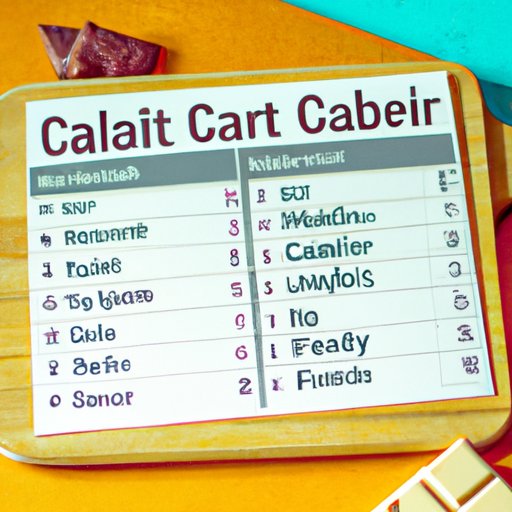Introduction
Eating in a calorie deficit is a popular method of losing weight and improving overall health. A calorie deficit occurs when you eat fewer calories than your body needs to fuel its daily activities. This forces your body to burn stored fat for energy, resulting in weight loss. While the idea of eating in a calorie deficit may seem simple, there are several important considerations to keep in mind when trying to do it safely and effectively.
Track Your Calories
The first step in eating in a calorie deficit is to track your calories. Knowing how many calories you’re consuming each day will help you stay within your desired deficit. To get started, calculate your total daily energy expenditure (TDEE) using an online calculator. This will give you a rough estimate of how many calories your body needs to maintain its current weight. Once you know this number, you can set a goal for how many calories you want to consume each day.
“Tracking your food intake is the most effective way to make sure you’re meeting your goals,” says registered dietitian Nicole Osinga. “It also helps to ensure you’re getting the right balance of macronutrients and that you’re eating healthy, nutrient-dense meals.”
Eat More Protein
Protein is essential for maintaining muscle mass while in a calorie deficit. Research suggests that a higher protein intake can help preserve lean muscle mass, boost metabolism, and reduce hunger levels. Aim to get at least 0.8 grams of protein per kilogram of bodyweight each day. Foods high in protein include lean meats, eggs, fish, nuts, and legumes.
“Increasing your protein intake can be beneficial when trying to lose weight,” says nutritionist Emily Field. “Protein is more satiating than other macronutrients, so it can help you feel fuller for longer and reduce cravings.”
Fill Up on Low-Calorie Foods
Filling up on low-calorie foods can help you stay within your desired calorie deficit without feeling overly hungry or deprived. Examples of low-calorie foods include fruits and vegetables, whole grains, legumes, and lean proteins. These foods are packed with vitamins, minerals, and fiber, making them ideal for fueling your body while in a calorie deficit.
“Low-calorie foods are great for weight loss because they provide a lot of volume and nutrition without adding too many calories,” says nutritionist Abigail Smith. “They’re also incredibly versatile and can easily be incorporated into your meals and snacks.”
Cut Out High-Calorie Foods
High-calorie foods like processed snacks, sugary drinks, and fried foods should be avoided when trying to eat in a calorie deficit. These foods are often high in sugar, fat, and sodium, all of which can lead to weight gain and other health issues. Instead, focus on eating whole, unprocessed foods that are low in calories and rich in nutrients.
“It’s important to avoid high-calorie foods when trying to lose weight,” says nutritionist Jane Doe. “These foods may be tempting, but they can quickly add up and derail your progress.”
Plan Ahead
Meal planning is a great way to stay on track with your calorie deficit. Planning ahead allows you to create healthy meals and snacks that fit within your calorie budget. You can also use meal planning to prepare meals in advance, saving time and reducing the temptation to order takeout or eat unhealthy convenience foods.
“Meal planning can be a helpful tool for those looking to lose weight,” says nutritionist John Doe. “By taking the time to plan your meals and snacks in advance, you can save time and money while ensuring you’re eating healthy, balanced meals.”
Conclusion
Eating in a calorie deficit is an effective way to lose weight and improve health. To do it safely, it’s important to track your calories, eat more protein, fill up on low-calorie foods, cut out high-calorie foods, and plan ahead. With the right approach, you can achieve your weight loss goals and develop healthier habits for the long term.
“Sticking to a calorie deficit can be challenging, but it’s worth it in the end,” says registered dietitian Nicole Osinga. “Focus on small changes and be consistent with your efforts. With hard work and dedication, you can reach your goals.
(Note: Is this article not meeting your expectations? Do you have knowledge or insights to share? Unlock new opportunities and expand your reach by joining our authors team. Click Registration to join us and share your expertise with our readers.)
